How to Do Universal Calibration using Mark-Houwink Constants - Tip127
OBJECTIVE or GOAL
Welcome back to Get Empowered! In the last Empower tip-of-the-week post for Empower Chromatography Data Software, we learned about doing relative calibration with broad standards (Tip #126).
In this week’s tip, we are going to learn about doing universal calibration using Mark-Houwink constants (k and alpha). The advantages to this technique are: it is an easy and accurate method, you can use one calibration curve for different types of polymers and you can determine the intrinsic viscosity of a polymer. The disadvantage is, the accuracy depends on the accuracy of the Mark-Houwink constants.
Let’s get started.
ENVIRONMENT
- Empower
PROCEDURE
- Bring the Sample Set into the Alter Sample window and click the Amounts tool. Change the Sample Set Type to Standards & Unknowns.
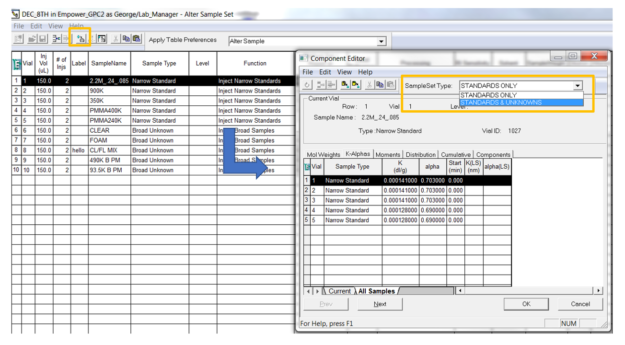
- Click the K-Alphas tab. Enter the Ks and Alphas for the standards and samples. You can find these values in polymer handbooks and/or Google them.
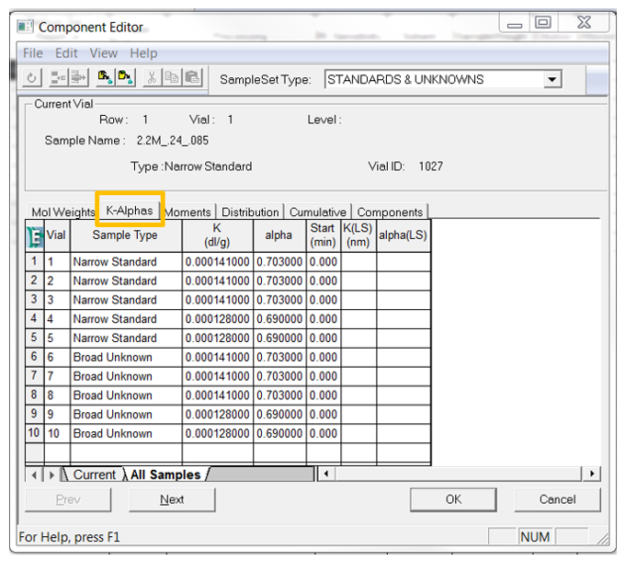
- Create a Processing Method and on the Calibration tab, select Universal for the GPC Technique.
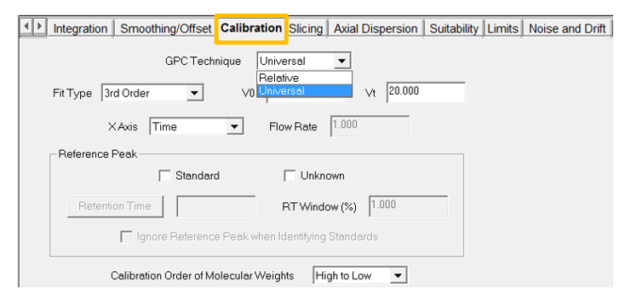
- After processing the Sample Set, we see the result for a sample. The calculation of Mv and [n]P (the intrinsic viscosity) are done in addition to the other molecular weight calculations.
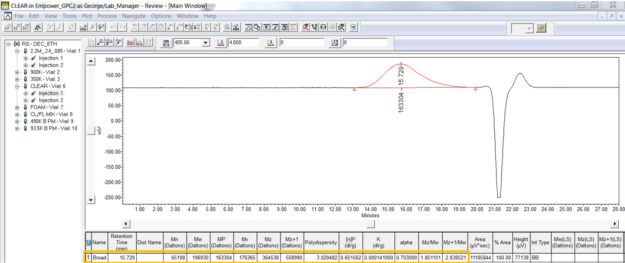
- The calibration curve plots Retention Time on the x-axis versus Log(Mw[n]) on the y-axis to reflect the addition of the viscosity term.
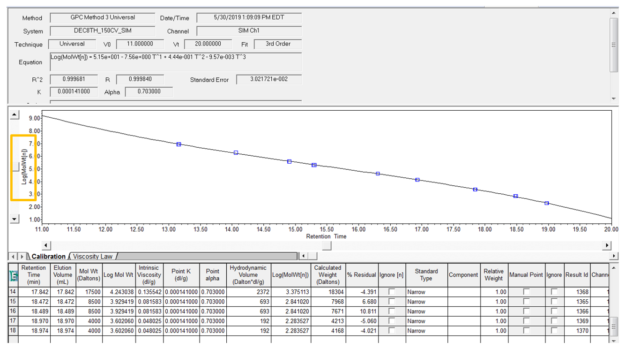
- Click the Viscosity Law tab to view the Viscosity Law plot. This plot illustrates the relationship between viscosity and molecular weight. The slope of the plot is alpha, and the y-intercept is K.
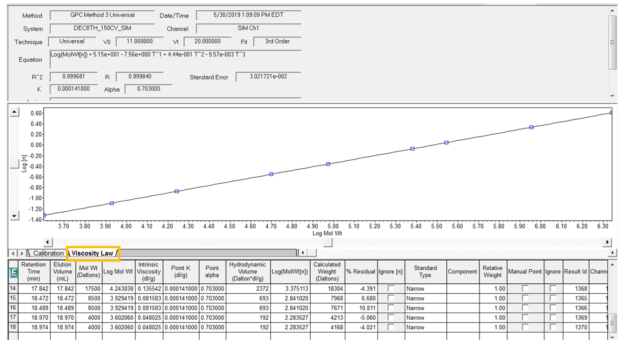
- Here we view a comparison of the results for a polymer processed using the Universal calibration curve versus the Relative calibration curve developed in an earlier tip.
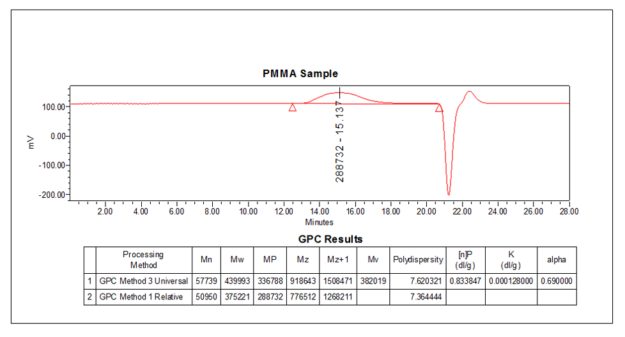
It’s that easy!
ADDITIONAL INFORMATION
- Intrinsic viscosity is the polymers contribution to the viscosity when it is in solution.
- This procedure can be followed using the QuickStart or Pro interface.
id69252, EMP2LIC, EMP2OPT, EMP2SW, EMP3GC, EMP3LIC, EMP3OPT, EMP3SW, EMPGC, EMPGPC, EMPLIC, EMPOWER2, EMPOWER3, EMPSW, SUP

